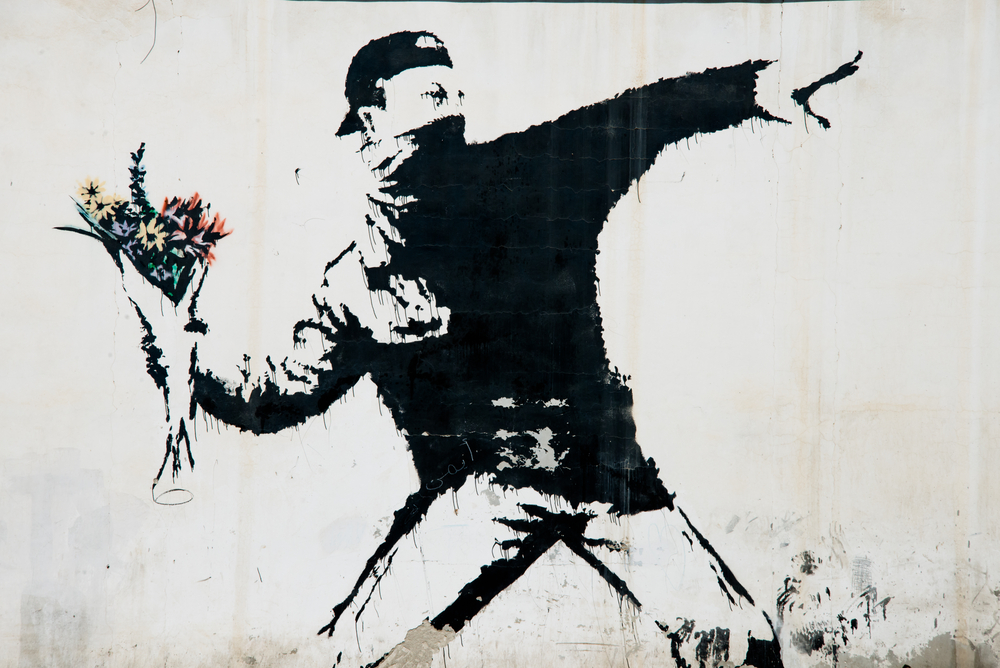Ahead of the Curve: The Patron Who Helped Kickstart the Activist Art Boom
/A mural by the British street artist Banksy in the West Bank. photo: Ryan Rodrick Beiler/shutterstock
In our most recent installment of philanthropy-backed activist art, we turn to Brooklyn, where earlier this month A Blade of Grass—a grantmaker founded in 2011 by philanthropist and cultural leader Shelley Frost Rubin—announced the winners of its 2018 Fellowship for Socially Engaged Art.
Selected from a pool of 476 applicants, the eight winners will each receive $20,000 in unrestricted funds to realize projects that explore issues of criminal justice reform, history preservation, food justice, gentrification, and environmental and racial justice.
From an operational and thematic perspective, the initiative hasn't changed too dramatically since I looked at 2016's winners. A Blade of Grass remains attuned to "how alliances are formed and maintained, the way disparate stakeholder groups are coordinated, how power dynamics are navigated, and how bridges are built between many different types of people within a socially engaged art project."
Nor has the funder followed in the footsteps of collector Agnes Gund or the Robert Rauschenberg Foundation by zeroing in on the specific issue of criminal justice reform. For artists exploring a full spectrum of pressing social issues, this is a good thing. Its approach is also illuminating for anyone intrigued by how funders define a term like "socially engaged art."
The announcement also underscores Shelley Frost Rubin's expanding influence in the realm of activist art giving.
In a 2016 interview, Rubin pointed to the growing interest among artists to be able to use their creativity to "make a better world." Given the ubiquity of socially-engaged arts philanthropy, it's easy to assume this enthusiasm and the requisite infrastructure to empower artists has always been there.
But as Rubin noted, "until we started a while ago, language hadn’t been formed well enough, and there was no funding source."
So seven years ago, before activist art reached critical mass or the Ford Foundation's pivot towards combating inequality, Rubin founded A Blade of Grass to "better understand how artists can illuminate and engage with social issues, expand the relationship between art and life, and build new audiences."
(Rubin was also quick to note that in an increasingly crowded activist art field, A Blade of Grass is the only funder exclusively devoted to socially-engaged art.)
Nor are Rubin's activist art ambitions limited to A Blade of Grass.
Rubin is also the co-chair of the Shelley & Donald Rubin Foundation, which established its Art and Social Justice initiative in 2015 with a mission to use "art as a tool for advocacy and creative change, inclusive community engagement, and the promotion of greater civic participation and public discourse."
Earlier this year, the foundation awarded grants to 60 organizations "aligned with art and social justice" with a specific emphasis on "engaging at-risk communities."
Give Rubin credit: She knows how to cover her bases. While A Blade of Grass' Fellowships for Social Engaged Art support individual artists, the Shelley & Donald Rubin Foundation's Art and Social Justice initiative funds organizations.
Shelley, who along with Donald opened the Rubin Museum of Art in New York City in 2004, has also been strikingly prescient when it comes to the red-hot issues of accessibility and engaging diverse audiences. Thanks to a donation from the Rubins, the Bronx Museum of the Arts began offering a free admission program in 2013 that continues today—a point frequently cited by critics of the Metropolitan Museum of Art's new paid admission policy.
And as for the surging field of activist art that she help set in motion, artists, Rubin said, increasingly "want to understand how they can be more active in the world." A Blade of Grass' fellowships are "a small little slice in the art world that is interesting and exciting."
To learn more about the Fellowship for Socially Engaged Art, click here.







































